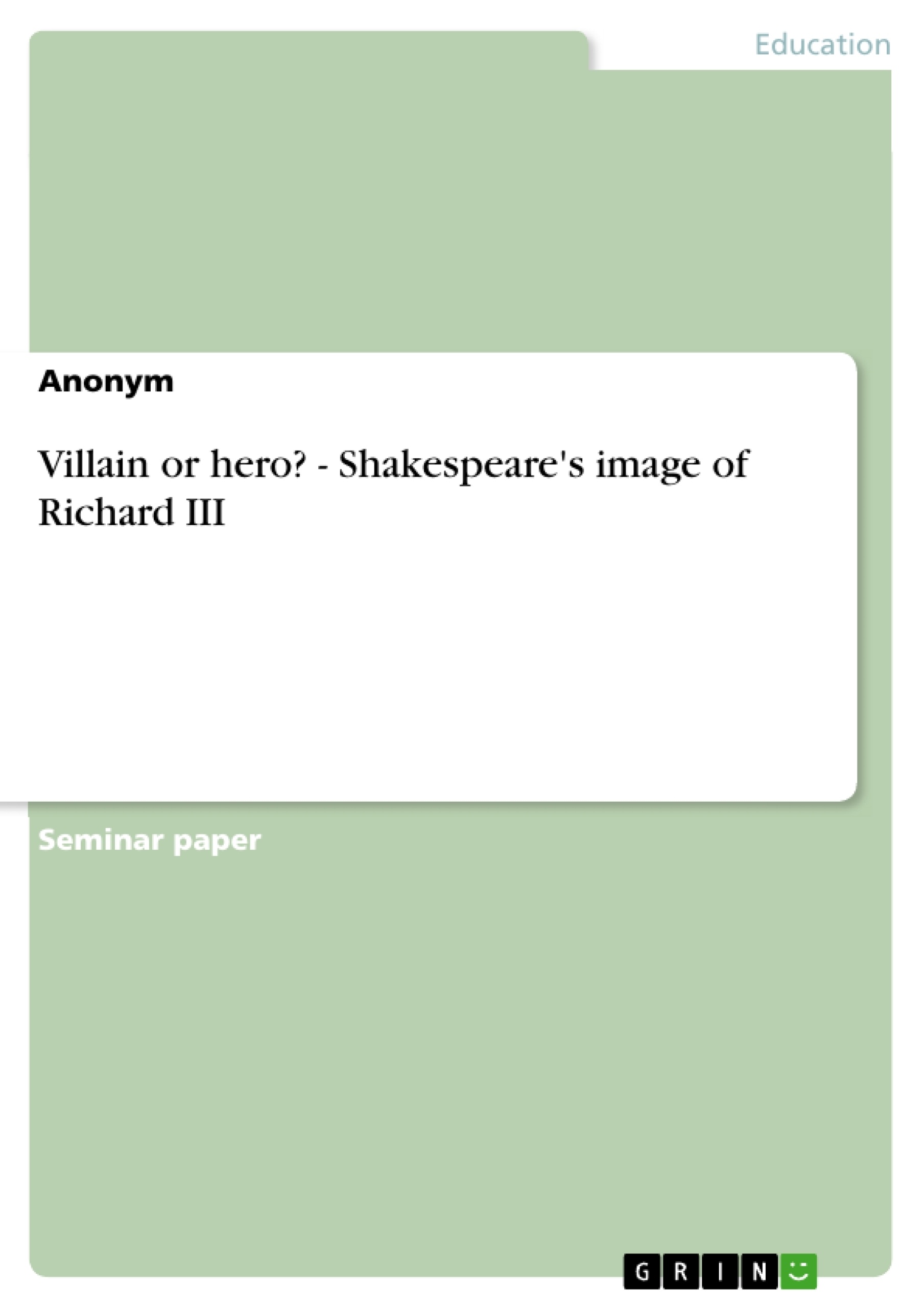In contemporary books about the English history, the entry about Richard III reads approximately as follows:
According to popular belief the most villainous King in English history was a hunchback who plotted all his life to become King. This relentless pursuit of the crown was done at any cost, even it seems down to the murder of the royal princes, the sons of Edward IV […].
When reading on, most of the works revise their opinion and admit that actually Richard was not any more blood thirsty or brutal than other contemporary monarchs, that the “popular belief” that he killed his Nephews in the Tower, and that he was malformed, was actually not a fact, but an assumption, which has not been proven up to this day. Although most of the time the reliable sources revise their opinion about this monarch a few paragraphs later, the first impression on the history-interested person is made. The question here is what creates or created this image of the villainous and deformed Richard III? Some history books mention William Shakespeare’s history The Tragedy of King Richard III as one of the possible works that have been influencing the people’s opinions about this English king. This essay is intended to analyze in what way Shakespeare’s work undermines this thesis and what picture he really drew of the monarch Richard III.
In order to understand this complex matter, the essay will guide through the historical background of the drama and will try to analyze the notion of Shakespeare’s portrayal. Furthermore, as the character of Richard appears in earlier plays already, the beginnings of the character will be presented in order to highlight the complexity of the character’s development. In addition, two characterizing scenes will be examined, so that the different views on Richard’s complexion can be observed. The last part consists of a short analysis of Richard’s counterpart Richmond, which emphasizes the impact that Richard’s complexion has on the audience.
Inhaltsverzeichnis (Table of Contents)
- Introduction
- 2.1. Historical Background
- 2.2. The early development of Richard's complexion
- 2.3. Richard's first soliloquy
- 2.4. The courting scene with Anne
- 2.5. Richard's counterpart: Richmond
- 3. Conclusion
Zielsetzung und Themenschwerpunkte (Objectives and Key Themes)
This essay aims to analyze how Shakespeare's play The Tragedy of King Richard III portrays the historical figure of Richard III and to examine the impact of this portrayal on the public's perception of the king. It explores the historical context of the play, analyzing the Tudor Myth and its influence on Shakespeare's work. It also examines the development of Richard's character throughout Shakespeare's works, with a focus on his physical and mental characteristics. The essay will examine two key scenes and conclude with a brief analysis of Richard's counterpart, Richmond.
- Shakespeare's portrayal of Richard III
- The Tudor Myth and its influence on historical narratives
- The relationship between physical appearance and inner character
- The development of Richard's character
- The impact of Richard's portrayal on the audience's perception
Zusammenfassung der Kapitel (Chapter Summaries)
- Introduction: This chapter introduces the essay's central question: how does Shakespeare's play The Tragedy of King Richard III portray Richard III, and what are the implications of this portrayal? It discusses the contrasting views on Richard III found in historical sources, highlighting the influence of Shakespeare's work on popular perception.
- 2.1. Historical Background: This chapter explores the historical context of the play, focusing on the War of the Roses, the rise of the Tudor family, and the Tudor Myth. It explains how the Tudors used history to legitimize their reign and how Shakespeare's work reflects these historical narratives.
- 2.2. The early development of Richard's complexion: This chapter delves into Shakespeare's portrayal of Richard III, examining how the character's physical and mental characteristics are presented in earlier works, particularly in the Henry VI plays. The chapter discusses the Elizabethan belief that a person's outward appearance reflects their inner character.
Schlüsselwörter (Keywords)
The main keywords and focus topics of this essay include: Richard III, Shakespeare, Tudor Myth, historical portrayal, physical appearance, character development, War of the Roses, Elizabethan belief, The Tragedy of King Richard III, Henry VI.
- Arbeit zitieren
- Anonym (Autor:in), 2008, Villain or hero? - Shakespeare's image of Richard III, München, GRIN Verlag, https://www.grin.com/document/201795



